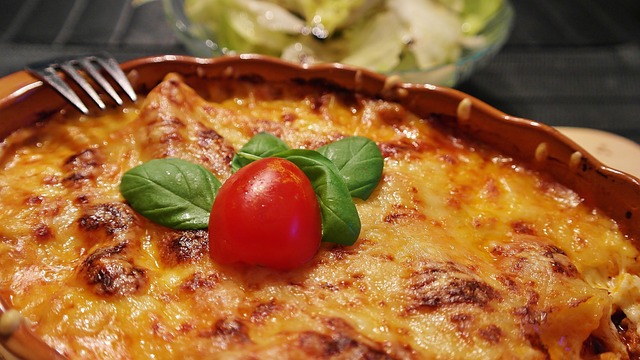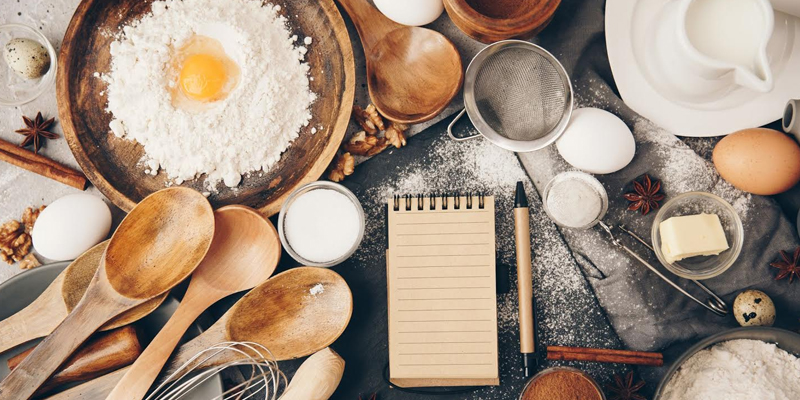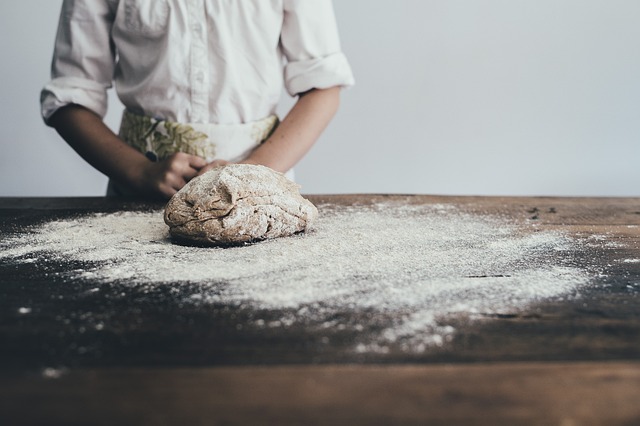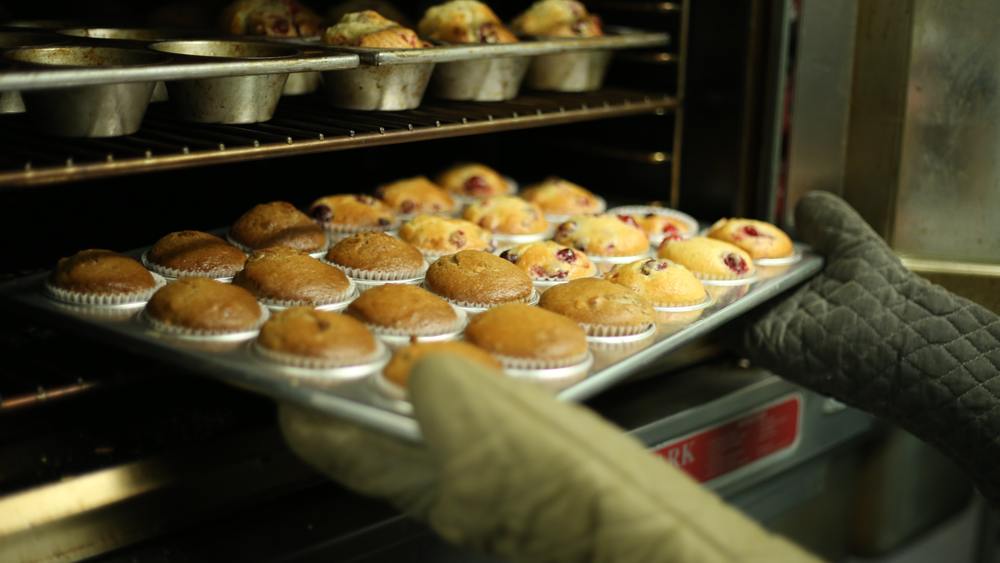
In today's fast-paced world, mastering the culinary arts is essential for those who desire to create delicious and safe meals in their own kitchens.
This article aims to provide a concise overview of seven fundamental culinary techniques that every aspiring home chef should hone.
From knife skills to sautéing, roasting to frying, this guide will equip you with the knowledge and expertise needed to confidently navigate the kitchen and create culinary masterpieces with precision and finesse.
Knife Skills
In the realm of culinary expertise, mastering knife skills is an essential foundation for any aspiring chef.
Knife sharpening and knife safety are two crucial aspects that cannot be overlooked. Keeping your knives sharp is not only important for efficient and precise cutting but also for safety. Dull knives can slip and cause accidents, whereas sharp ones allow for better control. Regular sharpening is necessary to maintain the sharpness of the blade.
Additionally, adhering to proper knife safety techniques is vital to prevent injuries. Always use a cutting board with a stable surface, hold the knife with a firm grip, and avoid cutting towards yourself.
Sautéing
Sautéing is a high heat cooking technique that allows for quick and flavorful results. It is a versatile cooking method that can be used for various ingredients, from vegetables to proteins.

High Heat Cooking
The mastery of high heat cooking requires precision and finesse. When it comes to sautéing, the use of high heat searing and charring techniques can elevate the flavor and texture of your dishes.
Here are some key points to keep in mind:
- Select the right pan: Use a heavy-bottomed pan that can withstand high heat without warping or burning.
- Preheat the pan: Allow the pan to heat up thoroughly before adding any ingredients. This ensures even cooking and prevents sticking.
- Control the heat: Adjust the heat as needed to prevent burning or scorching. Remember, high heat doesn't mean maximum heat.
- Work in batches: Avoid overcrowding the pan, as it can lower the temperature and result in steaming instead of searing.
Quick and Flavorful
To achieve quick and flavorful sautéed dishes, it is essential to master the art of controlling heat and working in batches, as discussed in the previous section on high heat cooking.
Sautéing is a cooking technique that involves quickly cooking food in a small amount of oil or fat over high heat. It is an excellent method for preserving the natural flavors and textures of ingredients while adding depth and complexity to dishes.
To save time and ensure even cooking, it is crucial to cut ingredients into uniform sizes and preheat the pan properly. Additionally, using a wide and shallow pan allows for better heat distribution and faster cooking.
Versatile Cooking Method
To achieve quick and flavorful sautéed dishes, mastering the art of controlling heat and working in batches is essential, as discussed in the previous section on high heat cooking.
Sautéing is a versatile cooking method that requires a different approach compared to other techniques. Here are some key considerations when sautéing:

- Heat sources: Whether you're using a gas stove, electric stovetop, or induction cooktop, understanding the characteristics of each heat source is crucial. Adjusting the heat accordingly ensures even cooking and prevents burning.
- Choosing the right pan: A wide, shallow pan with a flat bottom is ideal for sautéing. It provides ample surface area for ingredients to make contact with the heat source, allowing them to cook quickly and evenly.
- Oil selection: Opt for oils with high smoke points such as vegetable or canola oil. These oils can withstand the high temperatures required for sautéing without breaking down and imparting an unpleasant flavor.
- Working in batches: Overcrowding the pan can lead to steaming rather than sautéing. Cook ingredients in small batches, giving them enough space to brown and develop a delicious caramelized flavor.
Roasting
Roasting is a culinary technique that requires precision to achieve optimal results. One key consideration is the optimal roasting temperature, which can vary depending on the type of food being roasted.
Understanding the difference between roasting and baking is also important, as they involve different cooking methods and temperatures.
Additionally, roasting time can vary based on the size and thickness of the ingredients being cooked.
Optimal Roasting Temperature
Achieving the ideal roasting temperature is essential for culinary success. When it comes to roasting techniques, understanding the optimal temperature for different ingredients is crucial. Here are some key points to consider:
- Preheat the oven: Always preheat the oven to the recommended temperature before roasting to ensure even cooking.
- Use a meat thermometer: Invest in a reliable meat thermometer to accurately measure the internal temperature of your roast. This will help you achieve the perfect roast without overcooking or undercooking.
- Follow recommended guidelines: Different meats and vegetables have different recommended cooking temperatures. Refer to reliable sources or recipes to ensure you are roasting at the correct temperature.
- Resting time: After roasting, allow the meat to rest before carving. This allows the juices to redistribute, resulting in a more tender and flavorful roast.
Roasting Vs. Baking
Understanding the distinction between roasting and baking is essential for mastering the art of cooking. Both techniques involve cooking food in an oven, but they differ in terms of the temperatures used and the types of food typically prepared.
Roasting involves cooking food at higher temperatures, usually around 400°F or higher, to achieve a crispy exterior and tender interior. It is commonly used for meats, poultry, and vegetables. When roasting, it is important to use a roasting rack to allow for even heat circulation and to ensure that the food does not sit in its own juices.
On the other hand, baking is done at lower temperatures, usually around 350°F, and is used for items like bread, pastries, and desserts. Baking may require greasing or lining the baking pan to prevent sticking.

Understanding these differences and implementing the appropriate roasting techniques and baking tips will help you achieve delicious and well-cooked results in the kitchen.
Roasting Time Variations
To optimize the cooking process, it is important to consider the variations in roasting times for different types of food. Roasting is a dry heat cooking method that uses hot air to surround the food, resulting in a delicious crispy exterior and a moist and flavorful interior. However, achieving the perfect roast requires careful temperature control and an understanding of the specific cooking times for different ingredients.
Here are some key variations in roasting times to keep in mind:
- Poultry: A whole chicken typically takes about 20 minutes per pound to roast at 350°F (175°C). However, boneless chicken breasts may only take 15-20 minutes to cook.
- Beef: The cooking time for a beef roast depends on its size and desired level of doneness. As a general rule, roast beef at 325°F (160°C) for about 20 minutes per pound for medium-rare.
- Vegetables: Root vegetables like potatoes and carrots take longer to roast, usually around 45 minutes to an hour at 400°F (200°C). Tender vegetables like asparagus or zucchini, on the other hand, only require about 15-20 minutes.
- Fish: Fish cooks quickly and is best roasted at a high temperature, around 450°F (230°C). The cooking time will vary depending on the thickness of the fillet, but a general guideline is 10 minutes per inch of thickness.
Grilling
The grilling technique is an essential skill for any aspiring chef. Grilling imparts a distinct and flavorful char to various food items, enhancing their taste and texture. To achieve the perfect grill, it is important to master different grilling techniques.
Firstly, direct grilling involves cooking food directly over the heat source, resulting in a quick sear and caramelization. Indirect grilling, on the other hand, involves cooking food adjacent to the heat source, allowing for slower, more even cooking.
Another technique is plank grilling, where food is cooked on a wooden plank, infusing it with a smoky flavor. It is crucial to ensure proper heat control, regularly turning the food to prevent burning, and using a food thermometer to ensure safe internal temperatures.
Braising
Braising is a fundamental culinary technique that involves slow-cooking food in liquid, resulting in tender and flavorful dishes. It is a versatile method that can be used for a variety of ingredients, but it is particularly well-suited for tougher cuts of meat.

Here are some important braising techniques to master:
- Select the right cut of meat: Choose cuts with connective tissue and marbling, such as chuck roast or short ribs, as they will become tender and succulent when braised.
- Sear the meat: Start by browning the meat in a hot pan to develop a rich, caramelized flavor before adding the liquid.
- Use aromatics: Enhance the flavor of your braised dishes by adding aromatic ingredients like onions, garlic, and herbs.
- Monitor the liquid level: Make sure there is enough liquid to cover the meat during braising, and occasionally check and add more liquid if necessary.
Try out these braising techniques and explore a variety of braised meat recipes to elevate your cooking skills and create delicious, melt-in-your-mouth dishes.
Baking
Moving on from the previous subtopic of braising, baking is another essential culinary technique to master in the kitchen. Baking involves cooking food using dry heat, typically in an oven. Whether you're making bread, pastries, or roasted vegetables, understanding the proper baking techniques is crucial for achieving delicious and consistent results.
To start, it is important to preheat the oven to the correct temperature as stated in the recipe. This ensures even cooking and prevents under or over-baking. Another key aspect is measuring ingredients accurately, as baking is more precise than other cooking methods. Failure to do so can result in flat cakes or dense bread.
Common baking mistakes include opening the oven door too often, which can cause temperature fluctuations and affect the final outcome. Overmixing batter can also lead to tough and dense baked goods.
Frying
Frying is a versatile culinary technique that involves cooking food in hot oil or fat. It is a popular method that can yield delicious results, especially when aiming for a crispy texture. However, it is important to exercise caution and follow proper safety guidelines when frying.
Here are some key points to consider:

- Oil temperature control: Maintaining the correct oil temperature is crucial for successful frying. Use a thermometer to monitor the temperature and adjust the heat accordingly.
- Choosing the right oil: Different oils have different smoke points, so it's important to choose an oil that can withstand high temperatures without burning or producing harmful smoke.
- Preventing oil splatters: To avoid dangerous oil splatters, make sure the food is dry before adding it to the hot oil and gently place it in the pan to minimize splashing.
- Proper ventilation: Frying can create strong odors and smoke, so ensure proper ventilation in the kitchen to prevent any potential hazards.
Frequently Asked Questions
What Are Some Common Mistakes to Avoid When Using a Knife?
When using a knife, it is important to avoid common mistakes such as improper handling and lack of knife safety. Proper cutting techniques and being mindful of safety precautions are essential for a safe and efficient culinary experience.
How Do I Know When to Use Sautéing Versus Other Cooking Methods?
When deciding between sautéing and other cooking methods, consider the desired outcome. Sautéing is ideal for quickly cooking small, tender pieces of food, while braising can be a suitable alternative for meat without a dutch oven. Safety precautions should always be followed.
What Are Some Tips for Achieving a Crispy and Golden Crust When Roasting Meat or Vegetables?
Achieving a crispy and golden crust when roasting meat or vegetables can be a challenge, but with the right techniques, it can be easily mastered. Here are some tips to help you achieve that perfect crust.
How Can I Prevent My Grilled Meats From Sticking to the Grill Grates?
To prevent grilled meats from sticking to the grill grates, it is important to employ proper grilling techniques. Preheating the grill, oiling the grates, and using a clean grill will help create a non-stick surface and ensure safe and delicious results.
Are There Any Alternative Methods for Braising Meat if I Don't Have a Dutch Oven?
Alternative braising methods can be used when a Dutch oven is unavailable. Options include using a slow cooker, pressure cooker, or even a covered roasting pan in the oven. These methods ensure safe and effective braising without compromising the quality of the meat.
 Family Craft ProjectsHome ImprovementCooking and BakingReuse and RecycleDIY GiftsEco-Friendly ProjectsDIY Home SolutionsSeasonal ActivitiesFun and GamesLearn TogetherPrivacy PolicyTerms And Conditions
Family Craft ProjectsHome ImprovementCooking and BakingReuse and RecycleDIY GiftsEco-Friendly ProjectsDIY Home SolutionsSeasonal ActivitiesFun and GamesLearn TogetherPrivacy PolicyTerms And Conditions
